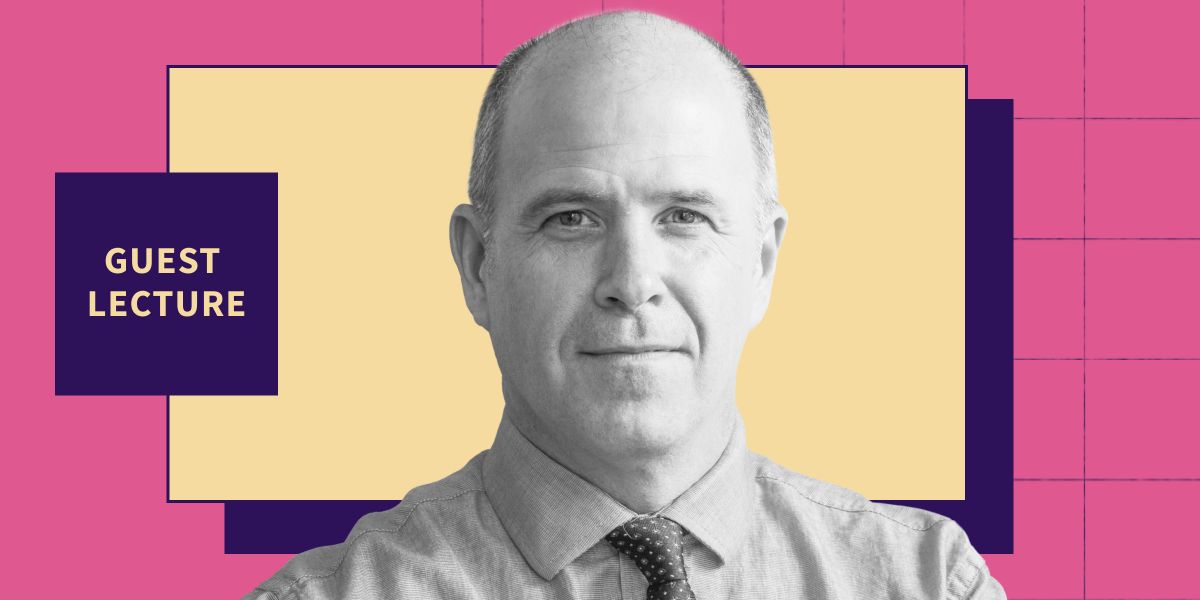

Everything You Need to Know About Getting a Post-Secondary Education
- By Emily Summers
- December 10, 2019
Are you about to graduate high school or have already graduated but are considering further studies for better employment opportunities? If so, then you might have heard the term “post-secondary education” every now and then.
As the name goes, post-secondary education takes place after you finish high school. And while most people see it as a stepping stone towards better employment opportunities in the future, this isn’t always necessarily the case. Also, contrary to popular belief, post-secondary education isn’t limited to college, so if money is a hindering factor for taking post-secondary education, you might want to consider the other options aside from college.
In this article, we define post-secondary education, what it means, and the various options available for you after your graduate high school (or high school equivalent). And then we tackle whether or not taking a post-secondary education really is important in the career path you want to take.
What Is Post-Secondary Education?
Secondary vs. post-secondary education, vocational schools, non-degree students, community colleges, colleges & universities, do i need post-secondary education for work.

Post-secondary education is also known as “higher education,” “third-level education,” or “tertiary education,” which all roughly mean the same thing. Its subtypes that don’t result in degrees like certificate programs and community college are also called “continuing education.” These refer to the educational programs you can take after graduating high school, get your GED, or anything similar to these in your country.
Unlike primary and secondary school that are mandatory for children under the age of 18, post-secondary education is completely optional. It is the final stage of formal learning and leads towards an academic degree. Post-secondary education is defined in the International Standard Classification of Education as levels 6 through 8. Post-secondary education also includes both undergraduate and postgraduate studies.
In the United States, plenty of high school students opt to take post-secondary education , with over 21 million students attending after high school. This is because many people see this as a ticket to economic security as having a higher education degree can be the key to opening more job opportunities in the market. While college is a type of post-secondary education, it is not the only form of tertiary education, though. And just because someone has completed their post-secondary education does not necessarily mean there will be job offers lined up for their choosing. Nor does it mean that they automatically earn more than a person who chose not to attend post-secondary education.

Secondary education is more commonly known as high school, but it can also refer to people who have taken their GED (General Education Development) tests or any equivalent around the world. Unlike post-secondary education, students are required to attend secondary school (or at least they are, until they turn 18 and can opt to drop out).
There are a number of people who choose to drop out ( around 527,000 people from October 2017 to October 2018). While it is possible for them to find work (around 47.2 percent of them), they cannot attend post-secondary education unless they finish high school or earn a secondary education diploma.
And while there are jobs available for those who didn’t get to finish secondary school or finished high school but opted not to attend post-secondary education, this closes some doors for them. For example, if you want to become a medical doctor , you cannot enter medical school until you earn a Bachelor’s degree by attending four years of college under an appropriate pre-med program. So, even if you got high grades in high school biology, no medical school is going to accept a student without a bachelor’s degree.
Post-Secondary Institutions
Contrary to popular belief, the term “post-secondary education” and its other similar terms aren’t limited to just earning a bachelor’s degree in high school. Colleges and universities are the most popular choice, but they may not be the most financially possible choice for everyone, especially if you consider that plenty of college graduates in the US are struggling to pay off student loan payments years after they’ve graduated college.
If you’re open to the idea of further education after high school but want to consider other options, here are your possible choices.
Also known as trade or tech schools, vocational schools teach it students on the technical side of certain crafts or skills of a specific job. Unlike colleges where its students receive academic training for careers in certain professional disciplines, vocational school students do job-specific training where certain physical skills are needed more than academic learning.
These are available in almost every country, though they may go by different names. In some countries, there may be both vocational schools run privately or public vocational school that are either fully or partially subsidized by the government for people who want to learn skills for better employment opportunities.
Some vocational courses include:
- Health care for nursing (for people who want to work as caregivers)
- Computer network management
- Word processing application (secretarial positions)
- Food and beverage management
- Fashion designing
- Electrician
- Commercial pilot
- Catering and hotel management
- Daycare management
- Hairstyling, cosmetics, and beautification
- Paralegal studies
- Massage therapy
- Pharmacy technician
- Travel agent
Take note that there are a lot more vocational courses than the ones provided, but not all vocational schools provide all types of courses. Some vocational schools may also specialize in certain industries, so it’s best to do your research on vocational schools in your area .
Completion of any of these courses provide you with a certificate that shows you have completed and trained for the skill of your choice. This gives you a competitive advantage in the job market compared to other high school graduates who do not have the same training for the skillset you have.
It is also possible to have multiple certificates for different courses if you think this will give you a further advantage, such as getting certified for Electrician, Plumber, and Carpentry courses if you intend to work in the construction industry. This also applies to college graduates who think they can get a leg up with both a college degree and a vocational school certificate on their resume.
There are two definitions of non-degree students . The first is a student who attends a college or university and attends undergraduate, master, or doctorate classes but not for the sake of earning a degree. These are people who may be interested in learning for specific classes and want to pursue academic interests but do not see the need to earn the full degree. These can be simply because they want to learn a certain field or who want to add to their resume that they took classes for a specific subject.
Another type of non-degree student are online or classroom programs on specific topics that can be used for resume-building skills or personal enrichment. You won’t earn a diploma, but you earn a certificate of completion. It’s similar to what you earn from tech school, but more academic than in terms of skill.
Community colleges are also known as “junior colleges” or “two-year colleges.” As its name goes, instead of earning a Bachelor’s degree after four years, community college students earn associate degrees after just two years . Some community colleges also offer non-degree certificates and vocational courses, though not all colleges do. Aside from academic classes, community colleges offer other programs for the community.
The reason why community colleges take half the time to earn a diploma is because it only offers the general education requirements taken by all college students. In regular colleges and universities, you spend four years studying: the first two years are dedicated to general education requirements, while the next two are for your specialized classes depending on your major.
Community college can be a step towards employment, but it can also be a step towards entering university. With the classes you’ve taken in community college, you can proceed to a university and major for two more years to work towards a bachelor’s degree. But if you think you don’t need one and intend to enter the workforce after attending community college, you’ll be given an associate’s degree after completion.
The most popular choice for post-secondary education, colleges and universities not only provide bachelor’s degree for high school students, but also post-graduate degrees for college students. Some examples of post-graduate degrees that fall under this bracket include graduate school, law school, medical school, dental school, and business school.
Some people attend post-secondary education institutions like graduate school and business schools for a master’s degree that will give them a leg-up in the job market for higher-ranking positions. However, for other institutions like law school and medical school, you need to enter and finish your education if you want to achieve a certain job role. For example, paralegals may need certification or even a bachelor’s degree, depending on how competitive a paralegal position in a law firm is, but if you want to become a lawyer, you need to finish to law school and pass the bar exam in your jurisdiction.
It’s relatively the most expensive form of post-secondary education, but there are several options on how to get in. There are several scholarship and grant programs that can provide you with partial to full scholarships (some even provide stipends or allowances for expenses like food, books, and other necessities) without having to go into debt. However, a lot of scholarship programs are extremely competitive and are usually awarded to students who show a lot of academic or athletic promise or require the most financial aid.
Getting post-secondary education is not necessary to land a job in the future, nor is there any assurance that getting further education will get you a job right after completing your education. If you feel like none of the options mentioned above can help you towards the career you want or see yourself doing in the future, then you don’t have to take any of them. Unlike elementary and secondary school in your younger years, post-secondary education isn’t mandatory – whether you attend school after high school or after the age of 18 is still your choice.
According to the Bureau of Labor Statistics, almost 70% of high school graduates in 2018 between the ages of 16 to 24 enrolled to colleges or universities. And out of the 20 to 29-year-olds who received a college diploma, around 72% were employed. However, 74% of high school graduates were in the labor force (meaning they were working or actively looking for work), while 42% of high school drop outs were working.
This means that regardless of your educational attainment, there will be a position in the job market that will suit your educational attainment. However, depending on what that is, the job market could be competitive.
Also, take note of the salary difference. One of the possible reasons why over half of high school graduates opt to attend post-secondary education is because the average annual salary of a college graduate is over half the average annual salary of a high school graduate – and the gap between the two educational attainments is only growing wider.
However, some people don’t work for the paycheck alone and work because it’s something they want to do or they’re content with their job and the salary they earn. There is nothing wrong with this, especially if this means they choose a career path or job that allows them to do what they want.
Whether or not you should pursue post-secondary education is ultimately up to you. If you want a career that doesn’t necessarily fall under the available institutions or you feel like continuing education will do little to help your career, then it’s OK to skip this altogether and pursue a career or track that you want. But if you want to pursue continuing education but feel like you can’t afford to take four years of college, then you know that you have other options available that may help you.
About the Author
Emily summers.

What programs can you find at early learning centers?

What Will My Child Learn in a Private Pre-K3 Program?

10 Aspects of Educational Growth We Take for Granted

What Is the ACE ABA Software?

Debunking the Myth of Roberto Nevilis: Who Really Invented Homework?

Is the D Important in Pharmacy? Why Pharm.D or RPh Degrees Shouldn’t Matter

How to Email a Professor: Guide on How to Start and End an Email Conversation

Grammar Corner: What’s The Difference Between Analysis vs Analyses?

Education Resources for Teachers
of Deaf/Hard of Hearing Students
Post Secondary Education and Training
Postsecondary education and training is a very critical area of transition. Frequently, people think automatically of college when considering this transition area. However, it is important to think about what postsecondary really means. “Post” means after and “secondary” means high school, so think about this transition area not only as college, but rather as education and training after high school. All students should be encouraged to pursue education and training beyond high school. These plans should be discussed in IEP meetings even before a student enters high school. For students with hearing loss who want to attend college, it is important that the IEP team makes class selections that will ensure a student has the necessary academic skills and coursework to apply and be accepted into higher education.
Postsecondary schools can include vocational and career schools, community and technical colleges, and four- year colleges or universities. Other types of educational training include military training, short-term vocational schools, on-the-job training, apprenticeships, Adult Basic Education (ABE), or community education classes. IEP teams should be prepared to discuss how a student’s academic skills and coursework may impact enrollment in college or other training.
If students are not academically ready for college but desire postsecondary education in the future, teams should discuss the option of Adult Basic Education programs as a way to continue to build academic skills after high school. A wide range of course offerings can be found in adult education programs. Adult/continuing education programs appeal to a variety of learners: those who are studying to take the GED Test; those who need to improve basic academic skills; and those who wish to take a course for self-enrichment. ABE programs provide free instruction in reading, writing, math, and thinking skills to adult learners with deficits in basic academic skills who wish to improve them, whether for functional application or to prepare for college entrance. Some ABE locations have also started offering career-specific pre-occupational training, as well as short-term training for certificates or licenses (for example, boiler’s license or commercial driver’s license).
In addition to meeting academic requirements, students need to have strong self-advocacy, time-management, money management, and independent living skills in order to be successful in postsecondary settings. By using the Postsecondary Competency Skills Checklist, IEP teams can help the students evaluate their readiness for postsecondary settings.
Students with hearing loss who know their rights and responsibilities are much better equipped to succeed in postsecondary settings. Hard of hearing students who may have had limited accommodations in high school often find they need additional accommodations in post high school settings. It is important for these students to develop and practice self-advocacy skills in high school as they will be expected to independently negotiate for needed services and accommodations after high school. This requires knowledge about Section 504, ADAA, reasonable accommodations, providing needed documentation when requesting services and accessing the disability service office on campus.
ADAA mandates documentation of a disability. For hearing loss, this is verified by a recent audiological evaluation. In some situations, documentation may also include a medical doctor’s diagnosis. When there is a secondary disability, such as vision loss, cognitive processing disorder, psychological disorder, etc., specific evaluations, such as medical, psychological or specialist examinations need to be obtained.
Support services personnel for students with disabilities on college campuses have different titles and work out of different offices from campus to campus. Students should ask for the Office for Disability Services or Office for Special Needs. Students should bring a list of questions when meeting with the disability specialist. The Postsecondary Accommodations Checklist in the Teacher Resources section lists accommodations that might be available through a program’s support services.
The determination and responsibility for provision of reasonable accommodations and aids is considered on an individual basis through collaboration between the student, the postsecondary institution’s Disability Services provider, service agency(s), faculty and administration when necessary. The following definitions relate to the educational supports provided in the postsecondary setting:
Attending college can be an exciting and enriching experience. It can also be a costly one. In addition to tuition, fees, books, and supplies, other expenses to think about include room and board, health insurance, transportation, and spending money. Financial aid is available to help students and their families pay for or supplement payment of educational expenses after high school. Common forms of financial aid include grants, loans, work-study, and scholarships. Students with disabilities may also be eligible for disability-related federal and state programs that offer financial support. Many students use a combination of these financial aid resources. In addition, D/HH students can apply for tuition assistance under Minnesota’s Higher Education Finance Bill Section 4 (135A.165) (Deaf Students; Tuition Assistance) if they: attend a Minnesota state college or university or the University of Minnesota; qualify for a state grant or federal Pell grant; and “depend primarily on visual communication”. Students should check with their college’s financial aid office for further information.
It is imperative to remember that financial aid results in a partnership of the student, parents, postsecondary educational institutions, state and federal governments, and/or private organizations. Such a partnership requires cooperation, communication, and an understanding by each of their responsibilities within the financial aid process. The financial aid office at the school you plan to attend is a good place to begin your search for financial aid information. The financial aid administrator can tell you about student aid available from your state, the school itself, and other sources. An important first step in acquiring financial aid is filling out the Free Application for Federal Student Aid (FAFSA) the year before enrollment.
Postsecondary education teacher resources (PDF)
- Postsecondary Competency Skills Checklist
- Postsecondary Accommodations Resource Checklist
- Talking to my Professors
- High School vs. College
What is a Post-Secondary Degree, and Do I Need One?

Quick Degree Finder
Part of the American dream has always been to send your children to college so they could obtain their degree. Despite a struggling economy, the last decade has seen record numbers of people seeking higher education. In 2019 alone, nearly 20 million Americans enrolled in colleges and universities to receive their degree, and experts are expecting this number to increase over the coming years .
And it’s not just wealthy families that are sending their kids to college. Recent surveys have found more low- and middle-income families are making higher education a priority.
If you have been wondering about getting a post-secondary degree – what it was exactly and if it was something that could help you earn more – be sure to read this entire article , because I’m going to share absolutely everything you need to know about post-secondary degrees.
Let’s get started!
What is a Post-Secondary Degree?

To keep things simple, a post-secondary degree is one that a person can obtain once they’ve received their high school diploma or GED. Post-secondary degrees may come from a community college, vocational school, an undergraduate college or a university.
These degrees show prospective employers that you have taken the time to receive specialized skills and knowledge. Beyond helping you stand out from other candidates come hiring time, post-secondary degrees can help you earn more – and in some cases – quite a bit more!
Types of Post-Secondary Degrees
As I mentioned, a post-secondary degree lets prospective employers know you have obtained specialized skills and information. But there are different types – or levels – of post-secondary degrees, and each one connotes a different level of expertise.
Associates Degree
Associates degrees are typically obtained in two years at either a community college or vocational/technical school. These degrees offer students a higher understanding of different professional settings and prepares them for entry-level work.
An associates degree can also be counted as the first two years of a 4-year bachelor’s degree. Many students, particularly adult students, will obtain their associates degree in order to get their foot in the door of their chosen field. Later, they can use this degree to jumpstart their next leg of education and obtain their bachelor’s degree, which will provide further employment and earnings opportunities.
Recommended Schools
Bachelor’s Degree
When we hear the term “college degree,” most people think of the classic 4-year bachelor’s degree. This is the most popular post-secondary degree people earn.
Bachelor’s programs provide a more holistic educational experience because they not only teach employable skills, but also academic subjects that help sharpen the students’ critical thinking skills.
While it typically takes students four years to earn a bachelor’s degree, it can sometimes take six or even eight years to complete. This is usually due to financial reasons, however. If you’re interested in obtaining a bachelor’s degree, be sure to read this article all the way to the end because I’m going to share how you can earn your bachelor’s degree for less money and even cut your time in half!

Master’s Degree
Once you have obtained your bachelor’s degree you may choose to go on and pursue a master’s degree. These programs allow students to gain even more expertise around a particular field of study. Depending on the program, master’s degrees typically take an additional two to three years to complete. Once obtained, these degrees can help you advance your career into management roles and earn much higher salaries.
Obtaining a doctorate degree is the highest academic achievement a person can attain. Holders of Ph.Ds. are usually in top positions in their field and earn much more. How much? Keep reading, I’m about to let you in on some salary secrets !
The Benefits of a Post-Secondary Education

At this point you hopefully understand what a post-secondary degree is. But you may still be wondering if obtaining one of these degrees is worth the time and cost.
The following are just some of the benefits of earning a post-secondary degree.
Higher income
I have been alluding to the fact that obtaining a higher degree usually leads to greater earning potential. According to a new report from the Georgetown University Center on Education and the Workforce (CEW), those who have obtained their post-secondary degree can expect to earn quite a bit more than those with only a high school diploma.
Of course, when it comes to earning potential, other factors come into play, such as field of study, occupation and location of your employment. So for instance, someone with a master’s of fine art degree may not earn as much as an engineer with only a bachelor’s degree.
Having said that, surveys taken over the years, including this recent one, have found certain generalized statements, such as those with even an associates degree can expect to earn 20% more than those with a high school diploma or GED.
Those with bachelor’s degrees can expect to earn between 35% and 85% more than those with only a high school diploma, while those with master’s degrees and Ph.Ds. can earn between 85% and 100% more than those with only a high school diploma.
So, if you are someone who is looking to advance your career and start earning more, getting a post-secondary degree makes a lot of sense!

Better Employee Benefits
You may not know this, but jobs that require you to have a bachelor’s degree or higher typically offer better job benefits. For instance, you may find your employer offers healthcare coverage, retirement plans, paid time off and other awesome perks.
More Career Options
It’s simple really: the higher you go with your education, the more career opportunities are available to you. While someone with an associates degree will be able to seek entry-level employment, someone with a master’s degree or Ph. D. will fill the highest positions and earn the highest salary.
Having said that, I want to make it clear that master’s degrees and Ph. Ds. are not necessary to have a rewarding and lucrative career. Many people have the career of their dreams and earn a great salary by earning a bachelor’s degree.
Job Security
If you’ve been in the job market over the last decade, you know that when the economy struggles, employers need to make cuts. Without question, those employees who have the most skills and expertise offer the most value to their employers and therefor have greater job security.
Job Satisfaction
We spend eight hours a day (or more) five days a week (or more) at our jobs. That’s a lot of time dedicated to something you may not like doing. Life just feels better when we love our work. Often, the careers that bring those most meaning and purpose into our lives, such as those in healthcare, science or education, require a post-secondary degree.
This isn’t by any means an exhaustive list of benefits, but these give you an idea of why you may seriously want to consider obtaining your post-secondary degree.
Cons of a Post-Secondary Education
Of course, to decide if a post-secondary education is right for you, you’ll also want to take into consideration a couple of cons, namely:
- It’s Expensive!
Obtaining a college degree is a definite financial commitment. And when you hear about students graduating with a mountain of student loan debt, it can stop you from following your dreams.

There are other common ways to pay for college such as applying for grants and scholarships. Unfortunately, what many students don’t realize is, this endeavor often takes a lot of time with no real payoff. There are only so many grants and scholarships to go around, and so most people will waste hours applying and never see any financial help.
Fear not – there is a simple way to save money toward the cost of college tuition, and I’m about to share that with you in just a moment.
Traditional College Degrees are Hard to Obtain for Adult Students
If you’re a working adult with family responsibilities, it can be next to impossible for you to put your life on hold so that you can move to another state to attend college for four years! Even attempting to take evening classes at your local community college can be a challenge when you have a growing family.
Without question, these two cons are why so many adults give up their pursuit of higher education. And that’s too bad because as we’ve seen, earning a post-secondary degree can be life changing!
Well, the good news is, there is any easy fix for these two problems. Earn your post-secondary degree online!
Can I Really Earn My Post-Secondary Degree Online?

Yes, you really can. In fact, according to one recent article in US News, over 6 million students have found earning their college degree online to be the fastest and easiest way to do it!
Here are some of the main benefits of earning your post-secondary degree online:
It’s More Affordable
Traditional college tuition can cost tens of thousands of dollars. It’s getting harder and harder for the average person to be able to afford this.
An online education, on the other hand, costs just a fraction of a typical education. You see, a physical brick and mortar school has a lot of operating expenses, and those expenses get passed onto you, the student.
Online degrees don’t have these same operating expenses and so you can save a ton. In addition, OnlineDegree.com can help you find even better ways to save. We’ve partnered with accredited colleges and universities across the country that not only offer online courses, they also offer upfront tuition discounts.
And as if that isn’t incredible enough, OnlineDegrees.com offers our students FREE classes for credit. You read that right! Take as many FREE classes as you’d like, then apply those later toward your degree. We’ll connect you with those programs that will accept these credits, thereby saving you EVEN MORE money and helping you earn your degree in far less time!
Hey there win/win!
If you’re a working adult raising a young family, you’ll be happy to know that earning your degree online offers a lot of necessary flexibility. Real life can often get in the way of your evening or weekend classes. Your boss may ask you to stay late, or your kid may get sick.
When you earn your degree online, you study when and where is most convenient for YOU. Set your own schedule and never have to worry about missing work or an important family event ever again!

Adult Friendly
Many institutions that offer online degree programs go out of their way to be adult friendly . This means in addition to being more flexible and affordable, these programs also do things like waive the need to submit SAT or ACT scores and also have open admissions. With open admissions, you can sign up for a post-secondary degree 24/7 365. You DON’T have to try and get your application package in by a specific date like most traditional colleges require.
Are You Ready to Get Started with Your Post-Secondary Degree?
I hope this article has answered any questions you may have had about post-secondary degrees. Without question, earning a post-secondary degree can help you build a rewarding career that offers numerous opportunities and a great salary.
And now you know you can earn this degree online far faster and more affordably than you ever thought possible!
OnlineDegree.com is 100% free for you to use . We provide you the tools to meet your education goals so you can learn your way to a more satisfying and prosperous life. By using our Smartplan , you can easily find ways to save time and money in just a few mouse clicks.
Our Smartplan will help you find:
- FREE courses you can take for credit
- Available tuition discounts
- Schools that are “adult friendly” and offer flexible enrollments and course schedules
- Schools that don’t require SAT or ACT scores
- And much more!
It only takes two minutes to sign up and get started on your journey toward earning your post-secondary degree and a brighter future .
What are you waiting for? Get started today .
Related Articles

How to Be Successful in College in 2022 – 7 Simple Tips to Succeed

How Do Scholarships Work? Read This First…Truth is Shocking

7 Best College Majors 2024: What Should I Major In?

How to Choose a College – 10 Things You Must Consider in 2024

Why Go to College? Top 13 Benefits for Adult Students in 2022

Top 5 Best Alternatives to Community College for 2024
About the author, grant aldrich.
Postsecondary Education
Postsecondary Education , also known as tertiary education, is the education level that follows the successful completion of secondary education, often referred to as high school. Postsecondary education includes universities and colleges, as well as trade and vocational schools. Postsecondary education usually culminates with a diploma, certification or academic degree.
Postsecondary education is decentralized from regulation by the federal government and is essentially independent from it. Postsecondary education is often diverse because there are private and public institutions. Some institutions are small and affiliated with religious organizations, while others could be secular, rural, urban, or suburban.
Product Overview
Teaching resources, further reading.

The Ultimate Guide to Metacognition for Post-Secondary Courses

James Lang’s Distracted: Why Students Can’t Focus and What You Can Do About It
More terms starting with p, partial outlines, pausing in lecture, the new higher ed value equation.
Discover what it takes to meet the evolving needs and expectations of today’s students.
- To save this word, you'll need to log in. Log In
postsecondary
Definition of postsecondary
Examples of postsecondary in a sentence.
These examples are programmatically compiled from various online sources to illustrate current usage of the word 'postsecondary.' Any opinions expressed in the examples do not represent those of Merriam-Webster or its editors. Send us feedback about these examples.
Word History
1920, in the meaning defined above
Dictionary Entries Near postsecondary
Cite this entry.
“Postsecondary.” Merriam-Webster.com Dictionary , Merriam-Webster, https://www.merriam-webster.com/dictionary/postsecondary. Accessed 5 Apr. 2024.
Subscribe to America's largest dictionary and get thousands more definitions and advanced search—ad free!

Can you solve 4 words at once?
Word of the day.
See Definitions and Examples »
Get Word of the Day daily email!
Popular in Grammar & Usage
The tangled history of 'it's' and 'its', more commonly misspelled words, why does english have so many silent letters, your vs. you're: how to use them correctly, every letter is silent, sometimes: a-z list of examples, popular in wordplay, 12 bird names that sound like compliments, 10 scrabble words without any vowels, 12 more bird names that sound like insults (and sometimes are), 8 uncommon words related to love, 9 superb owl words, games & quizzes.

- Daily Crossword
- Word Puzzle
- Word Finder
- Word of the Day
- Synonym of the Day
- Word of the Year
- Language stories
- All featured
- Gender and sexuality
- All pop culture
- Grammar Coach ™
- Writing hub
- Grammar essentials
- Commonly confused
- All writing tips
- Pop culture
- Writing tips
- postsecondary
or post-sec·ond·ar·y
of or relating to education beyond high school : She completed her postsecondary education at a two-year college. Students can begin coursework in aircraft maintenance at the high school level and complete it at a post-secondary institution.
Origin of postsecondary
Words nearby postsecondary.
- poststructuralism
- postsynaptic
- post-synchronization
- posttension
Dictionary.com Unabridged Based on the Random House Unabridged Dictionary, © Random House, Inc. 2024
How to use postsecondary in a sentence
This relief also helps our advisers and school counselors to better focus their time on outreach and support to students to stay on track for their postsecondary goals.
The combination of students changing the way they consume postsecondary education and businesses desperate for skilled employees has led to a new wave of strategic business partnerships — with or without the proposed federal grants.
There are thousands of people currently behind bars who deserve to experience the transformative power of a quality postsecondary education.
Now in its fifth year, the Second Chance Pell Experimental Sites Initiative has shown promising growth in closing racial inequities through broad access to postsecondary education.
She also received support from the Jeanette Rankin Women’s Scholarship Fund, which offers financial aid to low-income women older than 35 pursuing postsecondary education.
A third problem was the intense competition for places in higher education and other postsecondary institutions.
Between secondary and higher technical schools fall the advanced technicums, which function on a postsecondary level.

What is a Post-Secondary Education? All You Must Know in 2024
Postsecondary Education Definition
This is also called Tertiary education, the level of education following successful completion of high school, often called secondary school. It is a higher-level education, and it includes universities and colleges, also trade technical and professional schools. The Post education student usually receives a diploma, certificate, or university degree.
Education is decentralized from the federal government and is independent of its regulation. Post-secondary education is often different from one another, as we have private and public institutions.
While some of the institutions are both small and big, some are affiliation with religious groups, and others can be rural, urban, and secular. Depending on your choice, many options are often defined locally.
This education is an ongoing course of study that provides you with skills centered on a career that allows you to find your career as you develop a wealth of knowledge in this particular field.
What is Considered a Post-secondary Education?
Post-secondary education refers to an education that goes beyond high school, as the postsecondary education meaning comes from its name, i.e., after secondary school.
Any school that offers certificates for trade, diploma, and college degrees are referred to as a post-secondary school, and many times it can be either be below or above the college degree; it can be the master’s degree, professional degrees, and doctorates.
Any education after high school that is aimed at making the student further to an advanced study or to focus on a specific career.
What is Postsecondary School?
These are schools that offer a program that is on a more advanced level than the high school. The schools can either be private or public, and the schools are available with a variety of courses that the student can choose from.
Postsecondary schools require that you must have passed through high school because being a graduate from school is one of the entry requirements. These schools offer courses both at the graduate level and at the undergraduate level. While some of them might be schools that equip the student vocationally and technically to become fit for the labor market.
It does not matter the certificate the school offers, but the fact you have to pursue it after high school makes it a postsecondary school. Examples of some of these schools are universities, colleges, junior or community colleges , and Technical or vocational or trade or career schools.
Differences Between Secondary and Post-secondary Education
The course work in Postsecondary college is always more rigorous and intense than in secondary education. You will have to study more after each class.
In secondary school, your teachers might still treat you and relate with you on the basis that you are still young, but once you start postsecondary education your professors will consider you as an adult.
The subject taught in secondary schools invariably teaches the student the basic things of life, i.e., how they can live, communicate and connect with people with courses such as math, English, and communications. And some students start working directly with a diploma from high school.
While the Postsecondary courses teach the student to be thinkers, innovators, professionals, and researchers. These courses prepare them for more advanced responsibilities both in life and in their workplace.
The secondary school students must attend a class every time and mustn’t miss because the teacher will notice, but the postsecondary school classes have a larger audience, so you might decide as a postsecondary student not to go along with classes. Whether you will fail or not, it solely depends on you.
Postsecondary school study is more flexible than secondary school, your choice, and limitless, and you can decide whether you are choosing a thing or not.
The timetable for subjects at the secondary school in the USA is fixed, and the post-secondary institution of higher education timetable is flexible enough for you to plan and decide everything yourself.
The different types of postsecondary schools available are different for different purposes, depending on the student’s needs. Some of them are public and private, while some are larger and others smaller.
Some of the schools are four years, two years, while others can require more years. The four-year schools offer bachelor’s degrees as the qualification, and the two-year colleges offer the associate degree as a qualification.
Other schools can offer masters, doctorates, and other certifications. So, what are the different types of Post-secondary institutions?
Types of Post-secondary Institutions
The college is a four-year program that awards a bachelor’s degree i.e., BA, BS, BAFA, and BAS. Some of these colleges also award graduate degrees such as Masters, while others offer two-year associate of arts and science degrees.
And the college might be specialized e.g., Nursing and Medicine, or offer a wide range of courses, for example, Liberal art with an emphasis on humanities, social sciences, and natural sciences. The classes in college are often fewer than in university classes.
- Universities
The university offers both undergraduate and graduate programs and might even have a college of humanity, and professional and graduate studies such as the school of law and the Med school.
And universities also have more focus on academic and scientific research , and the classrooms are always more crowded than the colleges. This is because Universities offer associate degrees, bachelor’s degrees, and graduate degrees.
This type of school offers a lot of courses and programs; therefore, they are always having a lot of resources. Sometimes Graduate students are the ones that will take some classes as teaching assistants for the professors because most of the professors are always busy researching.
- Community Colleges
These are public institutions and offer two years of associate degree programs to students. Additionally, they also offer technical and vocational programs that will prepare the students for their future careers.
The school is generally accessible and mostly accessible by a student who is 18 and above at the time of admission. You can always attend community colleges to pursue a two-year program before you transfer to a college or university where you can pursue your bachelor’s degree program.
Most people prefer Community College because it is often more affordable, and the standard of admission is lesser than a four-year bachelor’s degree.
- Junior Colleges
Junior college offers the same courses as the community colleges, but it’s private and not a public institution supported by the Government.
- Career or Technical Schools
These are also called technical colleges; the school can be either operated privately or by the public. They offer programs that are either two years or less. Some programs might last only for weeks and months, depending on the requirement.
They are focused mostly on preparing and equipping students with the necessary technical and vocational skills to become employable immediately after school. At the conclusion of the program, the student can receive certificates, licenses, and associate degrees.
Technical schools are similar to trade schools, although the technical school teaches the student what makes an occupation work, and trade school focuses on the practical skills that can be applied.
- Vocational and Technical Education
Vocational and technical training provides students with professional teaching and training without a bachelor’s degree or diploma. Vocational and Technical course aims to prepare and equip students for occupations by providing technical and conceptual training with practical experience in a particular field.
This education is mostly for students that are not fans of a four-year bachelor’s degree. Within a shorter period, students can learn the necessary things to make them qualified for their chosen trades.
And the workforce in the US is made up of a larger percentage of people with technical and vocational certificates. In this type of postsecondary education, the program will be in direct alignment with the career.
Some Examples of Technical and Vocational Education:
- Dental assistants
- Occupational therapy assistants
- Licensed practical and licensed vocational nurses
- Nursing assistants
- Cosmetologists
- Electricians
- Fitness trainers
- Emergency Medical Technician and paramedics
- Automotive service technicians and mechanics
- Diagnostic medical sonographers
- Personal care aides

Undergraduate Postsecondary Education
Undergraduate education is the first postsecondary after high school. This type of education offers a degree as the qualification for the student. It can either be a two-year or a four-year degree program.
The associate is more accessible and only takes two years to complete. The associate’s is sometimes known as the transfer degree because it can either be studied to be used for advancement to higher learning or immediate employment. It is not specialized.
The associate degree is divided into two types: the Associate of Arts and Associate of Science.
The bachelor, on the other hand, uses the four-year option that is more specialized and has more entry standards and requirements than the associate. They can also either be used to further pursue higher learning or can be career-centered.
Although the program is four years, there are institutions that offer an accelerated option; the accelerated degree allows you to earn your degree in a shorter period.
There are different types of bachelor’s accredited in the US, but four out of them are generally known, and these are: Bachelor of Science, Bachelor of Arts, Bachelor of Fine Arts, and a Bachelor of Applied Science.
It can be studied part-time or full-time, but many bachelor students tend to go full-time.
Some examples of undergraduate Postsecondary Education:
- Associate of Science (AS)
- Associate of Arts (AA)
- Associate of Science in Accounting (AS)
- Associate of Technology (AT)
- Associate of Applied Science (AAS)
- Associate of Engineering (AE)
- Associate of Applied Arts (AAA)
- Associate of Forestry (AF)
- Associate of Arts in Teaching (AAT)
- Associate of Science in Nursing (ASN)
- Bachelor of Architecture (BArch)
- Bachelor of Arts (BA)
- Bachelor of Science in Business (BSBA)
- Bachelor of Engineering (BEng)
- Bachelor of Administrative Studies
- International Business Economics (BIBE)
- Bachelor of Applied Arts (BAA)
- Bachelor of Engineering Technology (BSET)
- Bachelor of Business Administration (BBA)
- Bachelor of Technology (BTech)
- Bachelor of Management Studies (BMS)
- Bachelor of Applied Arts and Science
Graduate Postsecondary Education
This is the highest level of achievement in academics, and it comes after the undergraduate degree . The graduate degree has the highest level of specialization, and it is more concerned with career.
Depending on your chosen program, the duration of this postsecondary education can last up to eight years and can be as short as one year. Mostly for people that are seeking executive positions in the organization or an individual that wants to work in academia or a research institute.
The entry requirement for this education is the undergraduate and other things based on each institution.
Postsecondary education is divided into two, Master ‘s and Doctoral degrees. The former can take up to three years or as short as one year. It is often the next program people pursue after their undergraduate.
A master’s degree is always more specialized than undergraduate education, and it is a point where most people change their careers. The master’s degree offers different types of options, the common types, specialized, and professional.
The common types of master’s degrees are Master of Science, Master of Arts, Master of Fine Arts, and Master of Applied Science.
While the doctoral degree is the most advanced education, it is the highest academic qualification that can be attained by the student. The completion can take up to eight years or less. Research is of utmost importance at this level, and it is mostly pursued by people working in academia.
Unlike undergraduate education, it is mostly pursued while working at the same time. Most of the students at this level are older adults and experienced professionals.
The doctoral degree can be professional, research, higher, or honorary.
Some examples of graduate Postsecondary Education:
- Master of Arts – M.A.
- Master of Economics – M. Econ
- Master of Professional Studies – MPS
- Master of Architecture – M. Arch.
- Master of Applied Science – MAS.
- Master of Physics – M. Phys
- Master of Political Science
- Masters in International Economics – MIE
- Master of Public Administration – MPA
- Master of Advanced Study – M.A.S.
- Master of International Studies – MIS
- Masters of Business Administration – MBA
- Doctor of Business Administration – DBA
- Doctor of Philosophy – Ph.D.
Benefits of Postsecondary Education
Even though post-secondary education is not the main requirement for employment, in this changing economy, a post-secondary degree will increase your chance of getting employed.
Post-secondary education might not be compulsory and will not be pursued by everybody, but it gives you more chances of acquiring more skills and getting knowledge.
Another benefit of post-high school education is personal development; postsecondary education will require that you have intense and rigorous studying, which will, in turn, improve your level of critical thinking.
Also, you will be able to improve your communication skills, both written and verbal. The writings and assignments at the post-secondary level are more advanced, and every assignment completed will help you learn how to communicate effectively.
Most students are still confused about their career choice up to the post-secondary level . But with different electives and general courses at the undergraduate level, they will be able to identify their area of interest.
As stated earlier, post postsecondary education might not seem compulsory to everybody because there are many jobs you can happily secure with a high school diploma. The time, cost, and effort needed to complete the post-secondary education might be much, but it will certainly pay off.
If you consider the opportunities that being a graduate offers , in terms of personal development , career development, and acquisition of different skills, then you would give postsecondary education a second thought.
Where you have to be careful is, at the point of choosing your field, always ensure it is tailored according to your goal, both personal and career.
Frequently Asked Questions
What is post-secondary education in the us.
Post-secondary includes all education that you can pursue after high school. It is often concluded as a term only for university and college education, but it also extends to trade or technical education and community colleges.
What grade is secondary education?
The secondary education is between grades 6 to 12.
What is considered postsecondary education?
The education that takes place after high school includes universities, colleges, and technical or vocational schools.
What is a private postsecondary education?
Education is undertaken at a privately owned postsecondary school other than the ones owned by the state government.
Is a bachelor’s degree in postsecondary education?
A bachelor’s degree is an undergraduate study that is part of postsecondary education.
Comments are closed.
How Many Schools Are in the U.S (Statistics & Facts) – 2024

How Much Does College Cost in The U.S? (Facts & Figures) – 2024

- Share full article
Advertisement
Why School Absences Have ‘Exploded’ Almost Everywhere
The pandemic changed families’ lives and the culture of education: “Our relationship with school became optional.”
By Sarah Mervosh and Francesca Paris
Sarah Mervosh reports on K-12 education, and Francesca Paris is a data reporter.
In Anchorage, affluent families set off on ski trips and other lengthy vacations, with the assumption that their children can keep up with schoolwork online.
In a working-class pocket of Michigan, school administrators have tried almost everything, including pajama day, to boost student attendance.
And across the country, students with heightened anxiety are opting to stay home rather than face the classroom.
In the four years since the pandemic closed schools, U.S. education has struggled to recover on a number of fronts, from learning loss , to enrollment , to student behavior .
But perhaps no issue has been as stubborn and pervasive as a sharp increase in student absenteeism, a problem that cuts across demographics and has continued long after schools reopened.
Nationally, an estimated 26 percent of public school students were considered chronically absent last school year, up from 15 percent before the pandemic, according to the most recent data, from 40 states and Washington, D.C., compiled by the conservative-leaning American Enterprise Institute . Chronic absence is typically defined as missing at least 10 percent of the school year, or about 18 days, for any reason.
Source: Upshot analysis of data from Nat Malkus, American Enterprise Institute. Districts are grouped into highest, middle and lowest third.
The increases have occurred in districts big and small, and across income and race. For districts in wealthier areas, chronic absenteeism rates have about doubled, to 19 percent in the 2022-23 school year from 10 percent before the pandemic, a New York Times analysis of the data found.
Poor communities, which started with elevated rates of student absenteeism, are facing an even bigger crisis: Around 32 percent of students in the poorest districts were chronically absent in the 2022-23 school year, up from 19 percent before the pandemic.
Even districts that reopened quickly during the pandemic, in fall 2020, have seen vast increases.
“The problem got worse for everybody in the same proportional way,” said Nat Malkus, a senior fellow at the American Enterprise Institute, who collected and studied the data.

Victoria, Texas reopened schools in August 2020, earlier than many other districts. Even so, student absenteeism in the district has doubled.
Kaylee Greenlee for The New York Times
The trends suggest that something fundamental has shifted in American childhood and the culture of school, in ways that may be long lasting. What was once a deeply ingrained habit — wake up, catch the bus, report to class — is now something far more tenuous.
“Our relationship with school became optional,” said Katie Rosanbalm, a psychologist and associate research professor with the Center for Child and Family Policy at Duke University.
The habit of daily attendance — and many families’ trust — was severed when schools shuttered in spring 2020. Even after schools reopened, things hardly snapped back to normal. Districts offered remote options, required Covid-19 quarantines and relaxed policies around attendance and grading .
Source: Nat Malkus, American Enterprise Institute . Includes districts with at least 1,500 students in 2019. Numbers are rounded. U.S. average is estimated.
Today, student absenteeism is a leading factor hindering the nation’s recovery from pandemic learning losses , educational experts say. Students can’t learn if they aren’t in school. And a rotating cast of absent classmates can negatively affect the achievement of even students who do show up, because teachers must slow down and adjust their approach to keep everyone on track.
“If we don’t address the absenteeism, then all is naught,” said Adam Clark, the superintendent of Mt. Diablo Unified, a socioeconomically and racially diverse district of 29,000 students in Northern California, where he said absenteeism has “exploded” to about 25 percent of students. That’s up from 12 percent before the pandemic.

U.S. students, overall, are not caught up from their pandemic losses. Absenteeism is one key reason.
Why Students Are Missing School
Schools everywhere are scrambling to improve attendance, but the new calculus among families is complex and multifaceted.
At South Anchorage High School in Anchorage, where students are largely white and middle-to-upper income, some families now go on ski trips during the school year, or take advantage of off-peak travel deals to vacation for two weeks in Hawaii, said Sara Miller, a counselor at the school.
For a smaller number of students at the school who qualify for free or reduced-price lunch, the reasons are different, and more intractable. They often have to stay home to care for younger siblings, Ms. Miller said. On days they miss the bus, their parents are busy working or do not have a car to take them to school.
And because teachers are still expected to post class work online, often nothing more than a skeleton version of an assignment, families incorrectly think students are keeping up, Ms. Miller said.

Sara Miller, a counselor at South Anchorage High School for 20 years, now sees more absences from students across the socioeconomic spectrum.
Ash Adams for The New York Times
Across the country, students are staying home when sick , not only with Covid-19, but also with more routine colds and viruses.
And more students are struggling with their mental health, one reason for increased absenteeism in Mason, Ohio, an affluent suburb of Cincinnati, said Tracey Carson, a district spokeswoman. Because many parents can work remotely, their children can also stay home.
For Ashley Cooper, 31, of San Marcos, Texas, the pandemic fractured her trust in an education system that she said left her daughter to learn online, with little support, and then expected her to perform on grade level upon her return. Her daughter, who fell behind in math, has struggled with anxiety ever since, she said.
“There have been days where she’s been absolutely in tears — ‘Can’t do it. Mom, I don’t want to go,’” said Ms. Cooper, who has worked with the nonprofit Communities in Schools to improve her children’s school attendance. But she added, “as a mom, I feel like it’s OK to have a mental health day, to say, ‘I hear you and I listen. You are important.’”
Experts say missing school is both a symptom of pandemic-related challenges, and also a cause. Students who are behind academically may not want to attend, but being absent sets them further back. Anxious students may avoid school, but hiding out can fuel their anxiety.
And schools have also seen a rise in discipline problems since the pandemic, an issue intertwined with absenteeism.
Dr. Rosanbalm, the Duke psychologist, said both absenteeism and behavioral outbursts are examples of the human stress response, now playing out en masse in schools: fight (verbal or physical aggression) or flight (absenteeism).

“If kids are not here, they are not forming relationships,” said Quintin Shepherd, the superintendent in Victoria, Texas.
Quintin Shepherd, the superintendent in Victoria, Texas, first put his focus on student behavior, which he described as a “fire in the kitchen” after schools reopened in August 2020.
The district, which serves a mostly low-income and Hispanic student body of around 13,000, found success with a one-on-one coaching program that teaches coping strategies to the most disruptive students. In some cases, students went from having 20 classroom outbursts per year to fewer than five, Dr. Shepherd said.
But chronic absenteeism is yet to be conquered. About 30 percent of students are chronically absent this year, roughly double the rate before the pandemic.
Dr. Shepherd, who originally hoped student absenteeism would improve naturally with time, has begun to think that it is, in fact, at the root of many issues.
“If kids are not here, they are not forming relationships,” he said. “If they are not forming relationships, we should expect there will be behavior and discipline issues. If they are not here, they will not be academically learning and they will struggle. If they struggle with their coursework, you can expect violent behaviors.”
Teacher absences have also increased since the pandemic, and student absences mean less certainty about which friends and classmates will be there. That can lead to more absenteeism, said Michael A. Gottfried, a professor at the University of Pennsylvania Graduate School of Education. His research has found that when 10 percent of a student’s classmates are absent on a given day, that student is more likely to be absent the following day.

Absent classmates can have a negative impact on the achievement and attendance of even the students who do show up.
Is This the New Normal?
In many ways, the challenge facing schools is one felt more broadly in American society: Have the cultural shifts from the pandemic become permanent?
In the work force, U.S. employees are still working from home at a rate that has remained largely unchanged since late 2022 . Companies have managed to “put the genie back in the bottle” to some extent by requiring a return to office a few days a week, said Nicholas Bloom, an economist at Stanford University who studies remote work. But hybrid office culture, he said, appears here to stay.
Some wonder whether it is time for schools to be more pragmatic.
Lakisha Young, the chief executive of the Oakland REACH, a parent advocacy group that works with low-income families in California, suggested a rigorous online option that students could use in emergencies, such as when a student misses the bus or has to care for a family member. “The goal should be, how do I ensure this kid is educated?” she said.

Relationships with adults at school and other classmates are crucial for attendance.
In the corporate world, companies have found some success appealing to a sense of social responsibility, where colleagues rely on each other to show up on the agreed-upon days.
A similar dynamic may be at play in schools, where experts say strong relationships are critical for attendance.
There is a sense of: “If I don’t show up, would people even miss the fact that I’m not there?” said Charlene M. Russell-Tucker, the commissioner of education in Connecticut.
In her state, a home visit program has yielded positive results , in part by working with families to address the specific reasons a student is missing school, but also by establishing a relationship with a caring adult. Other efforts — such as sending text messages or postcards to parents informing them of the number of accumulated absences — can also be effective.

Regina Murff has worked to re-establish the daily habit of school attendance for her sons, who are 6 and 12.
Sylvia Jarrus for The New York Times
In Ypsilanti, Mich., outside of Ann Arbor, a home visit helped Regina Murff, 44, feel less alone when she was struggling to get her children to school each morning.
After working at a nursing home during the pandemic, and later losing her sister to Covid-19, she said, there were days she found it difficult to get out of bed. Ms. Murff was also more willing to keep her children home when they were sick, for fear of accidentally spreading the virus.
But after a visit from her school district, and starting therapy herself, she has settled into a new routine. She helps her sons, 6 and 12, set out their outfits at night and she wakes up at 6 a.m. to ensure they get on the bus. If they are sick, she said, she knows to call the absence into school. “I’ve done a huge turnaround in my life,” she said.
But bringing about meaningful change for large numbers of students remains slow, difficult work .

Nationally, about 26 percent of students were considered chronically absent last school year, up from 15 percent before the pandemic.
The Ypsilanti school district has tried a bit of everything, said the superintendent, Alena Zachery-Ross. In addition to door knocks, officials are looking for ways to make school more appealing for the district’s 3,800 students, including more than 80 percent who qualify for free or reduced-price lunch. They held themed dress-up days — ’70s day, pajama day — and gave away warm clothes after noticing a dip in attendance during winter months.
“We wondered, is it because you don’t have a coat, you don’t have boots?” said Dr. Zachery-Ross.
Still, absenteeism overall remains higher than it was before the pandemic. “We haven’t seen an answer,” she said.
Data provided by Nat Malkus, with the American Enterprise Institute. The data was originally published on the Return to Learn tracker and used for the report “ Long COVID for Public Schools: Chronic Absenteeism Before and After the Pandemic .”
The analysis for each year includes all districts with available data for that year, weighted by district size. Data are sourced from states, where available, and the U.S. Department of Education and NCES Common Core of Data.
For the 2018-19 school year, data was available for all 50 states and the District of Columbia. For 2022-23, it was available for 40 states and D.C., due to delays in state reporting.
Closure length status is based on the most in-person learning option available. Poverty is measured using the Census Bureau’s Small Area Income and Poverty Estimates. School size and minority population estimates are from NCES CCD.
How absenteeism is measured can vary state by state, which means comparisons across state lines may not be reliable.
An earlier version of this article misnamed a research center at Duke University. It is the Center for Child and Family Policy, not the Center of Child and Family Policy.
You are using an outdated browser. Please upgrade your browser to improve your experience.

Health & Nursing
Courses and certificates.
- Bachelor's Degrees
- View all Business Bachelor's Degrees
- Business Management – B.S. Business Administration
- Healthcare Administration – B.S.
- Human Resource Management – B.S. Business Administration
- Information Technology Management – B.S. Business Administration
- Marketing – B.S. Business Administration
- Accounting – B.S. Business Administration
- Finance – B.S.
- Supply Chain and Operations Management – B.S.
- Accelerated Information Technology Bachelor's and Master's Degree (from the School of Technology)
- Health Information Management – B.S. (from the Leavitt School of Health)
Master's Degrees
- View all Business Master's Degrees
- Master of Business Administration (MBA)
- MBA Information Technology Management
- MBA Healthcare Management
- Management and Leadership – M.S.
- Accounting – M.S.
- Marketing – M.S.
- Human Resource Management – M.S.
- Master of Healthcare Administration (from the Leavitt School of Health)
- Data Analytics – M.S. (from the School of Technology)
- Information Technology Management – M.S. (from the School of Technology)
- Education Technology and Instructional Design – M.Ed. (from the School of Education)
Certificates
- View all Business Degrees
Bachelor's Preparing For Licensure
- View all Education Bachelor's Degrees
- Elementary Education – B.A.
- Special Education and Elementary Education (Dual Licensure) – B.A.
- Special Education (Mild-to-Moderate) – B.A.
- Mathematics Education (Middle Grades) – B.S.
- Mathematics Education (Secondary)– B.S.
- Science Education (Middle Grades) – B.S.
- Science Education (Secondary Chemistry) – B.S.
- Science Education (Secondary Physics) – B.S.
- Science Education (Secondary Biological Sciences) – B.S.
- Science Education (Secondary Earth Science)– B.S.
- View all Education Degrees
Bachelor of Arts in Education Degrees
- Educational Studies – B.A.
Master of Science in Education Degrees
- View all Education Master's Degrees
- Curriculum and Instruction – M.S.
- Educational Leadership – M.S.
- Education Technology and Instructional Design – M.Ed.
Master's Preparing for Licensure
- Teaching, Elementary Education – M.A.
- Teaching, English Education (Secondary) – M.A.
- Teaching, Mathematics Education (Middle Grades) – M.A.
- Teaching, Mathematics Education (Secondary) – M.A.
- Teaching, Science Education (Secondary) – M.A.
- Teaching, Special Education (K-12) – M.A.
Licensure Information
- State Teaching Licensure Information
Master's Degrees for Teachers
- Mathematics Education (K-6) – M.A.
- Mathematics Education (Middle Grade) – M.A.
- Mathematics Education (Secondary) – M.A.
- English Language Learning (PreK-12) – M.A.
- Endorsement Preparation Program, English Language Learning (PreK-12)
- Science Education (Middle Grades) – M.A.
- Science Education (Secondary Chemistry) – M.A.
- Science Education (Secondary Physics) – M.A.
- Science Education (Secondary Biological Sciences) – M.A.
- Science Education (Secondary Earth Science)– M.A.
- View all Technology Bachelor's Degrees
- Cloud Computing – B.S.
- Computer Science – B.S.
- Cybersecurity and Information Assurance – B.S.
- Data Analytics – B.S.
- Information Technology – B.S.
- Network Engineering and Security – B.S.
- Software Engineering – B.S.
- Accelerated Information Technology Bachelor's and Master's Degree
- Information Technology Management – B.S. Business Administration (from the School of Business)
- View all Technology Master's Degrees
- Cybersecurity and Information Assurance – M.S.
- Data Analytics – M.S.
- Information Technology Management – M.S.
- MBA Information Technology Management (from the School of Business)
- Full Stack Engineering
- Web Application Deployment and Support
- Front End Web Development
- Back End Web Development
3rd Party Certifications
- IT Certifications Included in WGU Degrees
- View all Technology Degrees
- View all Health & Nursing Bachelor's Degrees
- Nursing (RN-to-BSN online) – B.S.
- Nursing (Prelicensure) – B.S. (Available in select states)
- Health Information Management – B.S.
- Health and Human Services – B.S.
- Psychology – B.S.
- Health Science – B.S.
- Healthcare Administration – B.S. (from the School of Business)
- View all Nursing Post-Master's Certificates
- Nursing Education—Post-Master's Certificate
- Nursing Leadership and Management—Post-Master's Certificate
- Family Nurse Practitioner—Post-Master's Certificate
- Psychiatric Mental Health Nurse Practitioner —Post-Master's Certificate
- View all Health & Nursing Degrees
- View all Nursing & Health Master's Degrees
- Nursing – Education (BSN-to-MSN Program) – M.S.
- Nursing – Leadership and Management (BSN-to-MSN Program) – M.S.
- Nursing – Nursing Informatics (BSN-to-MSN Program) – M.S.
- Nursing – Family Nurse Practitioner (BSN-to-MSN Program) – M.S. (Available in select states)
- Nursing – Psychiatric Mental Health Nurse Practitioner (BSN-to-MSN Program) – M.S. (Available in select states)
- Nursing – Education (RN-to-MSN Program) – M.S.
- Nursing – Leadership and Management (RN-to-MSN Program) – M.S.
- Nursing – Nursing Informatics (RN-to-MSN Program) – M.S.
- Master of Healthcare Administration
- MBA Healthcare Management (from the School of Business)
- Business Leadership (with the School of Business)
- Supply Chain (with the School of Business)
- Back End Web Development (with the School of Technology)
- Front End Web Development (with the School of Technology)
- Web Application Deployment and Support (with the School of Technology)
- Full Stack Engineering (with the School of Technology)
- Single Courses
- Course Bundles
Apply for Admission
Admission requirements.
- New Students
- WGU Returning Graduates
- WGU Readmission
- Enrollment Checklist
- Accessibility
- Accommodation Request
- School of Education Admission Requirements
- School of Business Admission Requirements
- School of Technology Admission Requirements
- Leavitt School of Health Admission Requirements
Additional Requirements
- Computer Requirements
- No Standardized Testing
- Clinical and Student Teaching Information
Transferring
- FAQs about Transferring
- Transfer to WGU
- Transferrable Certifications
- Request WGU Transcripts
- International Transfer Credit
- Tuition and Fees
- Financial Aid
- Scholarships
Other Ways to Pay for School
- Tuition—School of Business
- Tuition—School of Education
- Tuition—School of Technology
- Tuition—Leavitt School of Health
- Your Financial Obligations
- Tuition Comparison
- Applying for Financial Aid
- State Grants
- Consumer Information Guide
- Responsible Borrowing Initiative
- Higher Education Relief Fund
FAFSA Support
- Net Price Calculator
- FAFSA Simplification
- See All Scholarships
- Military Scholarships
- State Scholarships
- Scholarship FAQs
Payment Options
- Payment Plans
- Corporate Reimbursement
- Current Student Hardship Assistance
- Military Tuition Assistance
WGU Experience
- How You'll Learn
- Scheduling/Assessments
- Accreditation
- Student Support/Faculty
- Military Students
- Part-Time Options
- Virtual Military Education Resource Center
- Student Outcomes
- Return on Investment
- Students and Gradutes
- Career Growth
- Student Resources
- Communities
- Testimonials
- Career Guides
- Skills Guides
- Online Degrees
- All Degrees
- Explore Your Options
Admissions & Transfers
- Admissions Overview
Tuition & Financial Aid
Student Success
- Prospective Students
- Current Students
- Military and Veterans
- Commencement
- Careers at WGU
- Advancement & Giving
- Partnering with WGU
A Guide To Continuing Education For Teachers
- See More Tags

What is continuing education?
Continuing education (CE) is the post-secondary coursework and specialized training that gives working professionals, including teachers, the opportunity to learn skills that can grow their career, give them a competitive edge, and boost their salary potential. Many higher education institutions offer CE through flexible online degree programs designed for both working and aspiring educators. CE courses allow anyone looking to advance their career the means to do so without having to complete an entire degree program, helping them benefit the students in their classrooms with their personal development.
Continuing education requirements for teachers.
Formal CE requirements vary depending on the state in which the educator resides and their specialty, so it’s advisable for teachers to check with their school or with their state’s teaching board for specific CE guidelines. Most states and schools require teaching professionals to earn a minimum number of continuing education units (CEUs) or continuing education credits (CECs) every five years to renew their teaching licenses. Development courses, advancement courses, workshops, and graduate credit could all be part of this process. Beyond the standard CE requirements educators are expected to complete, many working teachers take CE a step further by pursuing additional degrees and certifications for their own career advancement. Educators are passionate about helping the students in their classroom, and dedicated teachers know that this kind of coursework will help them better understand the changes in education and how they can be involved.
Why is continuing education important for teachers?
Continuing education for educators often consists of in-depth, graduate-level courses. CE is required to maintain state licensure because it keeps teachers up to date on new ideas and best practices in education—and that’s just for starters. CE is important to teachers in a multitude of other ways, including:
Increasing the potential for a promotion or bigger salary.
Improving job performance and image.
Helping transition to a new education career.
Fostering personal interests and development.
Encouraging the development of time management skills that enable better performance.
Increasing job marketability and security.
Prepare educators to move upward, such as to a university or to work with older students.
Providing opportunities for professional networking.
What’s the difference between continuing education and professional development?
While a professional development course can count as a continuing education course , it’s important to distinguish the two. Teachers are awarded CEUs for successfully completing a formal training program, usually with the intention of furthering professional knowledge. Professional development hours (PDHs) are awarded to a person based on contact hours of a presentation or training class.

Options for continuing education.
CE comes in multiple forms and will vary depending on what’s required by your state. They include:
Noncredit online courses. Many teachers pursue this route for CE options because of the flexibility, affordability, and wide availability. Classes typically only take a few weeks and all coursework is completed at home. These courses are often directly applicable to classroom work for students.
Online courses for credit at an accredited institution may cost a little more, but it can be well worth it if you’re pursuing an advanced degree—because the advanced degree can pave the way to a higher position and salary. This is a great way to learn new education trends and strategies to use in your classroom.
In-person classes. CE classes are always on the roster at universities and community colleges and appeal to those who prefer in-person learning. Teaching professionals become the student in these types of courses.
Yearly classes or tests help teachers stay current on changes in the industry and can be held anywhere from online to a college campus or community center.
Entire degree programs or advanced degrees at an online or traditional university can be an exceptionally rewarding option because they help teachers earn CE credits while also preparing them for new opportunities and responsibilities. While a full degree program isn’t required to earn CEUs, this is among the most promising ways for a teacher to advance their career and salary potential.
Workshops, seminars, and one-time classes provide a quick, affordable way for a teacher to meet a professional development requirement and help build a teacher’s skills, confidence, and awareness of current issues and strategies in the teaching profession.
Conferences or lectures offer the opportunity for teachers to learn from experts in their field.
Choosing a continuing education course.
When the time comes to choose a CE course, here’s some advice you can count on to make a well-informed decision.
Examine the program description. Courses vary considerably in quality and value so check for positive reviews or feedback on them before committing. Questions to ask yourself: Does the course take an active-learning approach? Will it include feedback from industry experts? Is its intention adequately and clearly explained?
Assess learning outcomes. This can help distinguish broad overview courses from in-depth programs.
Review faculty credentials. This helps determine if a meaningful program will be presented.
Assess the production quality. Valuable content is valuable content, but poor-quality video and audio to present it risk deterring you from learning. Make sure the program is presented in a professional format with clean visual components and clear audio.
Look at the price. The price tag on a CE course can say a lot about what’s in store. For instance, a surprising low price is usually a red flag that corners will be cut. Boo! Let the course’s amount of content and production quality help you determine if it’s all worth signing up for.
Continuing education is essential for renewing your teaching license, but it can also provide incredible opportunities to advance your career. Fortunately, CE is built into the curriculum of WGU’s online degree programs for aspiring teachers and teachers looking to take their career to the next level. Learn more about these programs , right here, right now.
Ready to Start Your Journey?
HEALTH & NURSING
Recommended Articles
Take a look at other articles from WGU. Our articles feature information on a wide variety of subjects, written with the help of subject matter experts and researchers who are well-versed in their industries. This allows us to provide articles with interesting, relevant, and accurate information.
{{item.date}}
{{item.preTitleTag}}
{{item.title}}
The university, for students.
- Student Portal
- Alumni Services
Most Visited Links
- Business Programs
- Student Experience
- Diversity, Equity, and Inclusion
- Student Communities
The shortest time frame in which our writers can complete your order is 6 hours. Length and the complexity of your "write my essay" order are determining factors. If you have a lengthy task, place your order in advance + you get a discount!
What is the best essay writer?
The team EssaysWriting has extensive experience working with highly qualified specialists, so we know who is ideal for the role of the author of essays and scientific papers:
- Easy to communicate. Yes, this point may seem strange to you, but believe me, as a person communicates with people, he manifests himself in the texts. The best essay writer should convey the idea easily and smoothly, without overloading the text or making it messy.
- Extensive work experience. To start making interesting writing, you need to write a lot every day. This practice is used by all popular authors for books, magazines and forum articles. When you read an essay, you immediately understand how long a person has been working in this area.
- Education. The ideal writer should have a philological education or at least take language courses. Spelling and punctuation errors are not allowed in the text, and the meaning should fit the given topic.
Such essay writers work in our team, so you don't have to worry about your order. We make texts of the highest level and apply for the title of leaders in this complex business.
Experts to Provide You Writing Essays Service.
You can assign your order to:
- Basic writer. In this case, your paper will be completed by a standard author. It does not mean that your paper will be of poor quality. Before hiring each writer, we assess their writing skills, knowledge of the subjects, and referencing styles. Furthermore, no extra cost is required for hiring a basic writer.
- Advanced writer. If you choose this option, your order will be assigned to a proficient writer with a high satisfaction rate.
- TOP writer. If you want your order to be completed by one of the best writers from our essay writing service with superb feedback, choose this option.
- Your preferred writer. You can indicate a specific writer's ID if you have already received a paper from him/her and are satisfied with it. Also, our clients choose this option when they have a series of assignments and want every copy to be completed in one style.
Finished Papers
Our writers always follow the customers' requirements very carefully
Read what our clients have to say about our writing essay services!
Well-planned online essay writing assistance by penmypaper.
Writing my essays has long been a part and parcel of our lives but as we grow older, we enter the stage of drawing critical analysis of the subjects in the writings. This requires a lot of hard work, which includes extensive research to be done before you start drafting. But most of the students, nowadays, are already overburdened with academics and some of them also work part-time jobs. In such a scenario, it becomes impossible to write all the drafts on your own. The writing service by the experts of PenMyPaper can be your rescuer amidst such a situation. We will write my essay for me with ease. You need not face the trouble to write alone, rather leave it to the experts and they will do all that is required to write your essays. You will just have to sit back and relax. We are offering you unmatched service for drafting various kinds for my essays, everything on an online basis to write with. You will not even have to visit anywhere to order. Just a click and you can get the best writing service from us.
How much does an essay cost?
Starting your search for an agency, you need to carefully study the services of each option. There are a lot of specialists in this area, so prices vary in a wide range. But you need to remember that the quality of work directly depends on the cost. Decide immediately what is more important to you - financial savings or the result.
Companies always indicate how much 1000 characters of text costs, so that the client understands what price to expect and whether it is worth continuing to cooperate.
At Essayswriting, it all depends on the timeline you put in it. Professional authors can write an essay in 3 hours, if there is a certain volume, but it must be borne in mind that with such a service the price will be the highest. The cheapest estimate is the work that needs to be done in 14 days. Then 275 words will cost you $ 10, while 3 hours will cost you $ 50. Please, take into consideration that VAT tax is totally included in the mentioned prices. The tax will be charged only from EU customers.
When choosing an agency, try to pay more attention to the level of professionalism, and then evaluate the high cost of work.
Customer Reviews
Why choose us
Andersen, Jung & Co. is a San Francisco based, full-service real estate firm providing customized concierge-level services to its clients. We work to help our residential clients find their new home and our commercial clients to find and optimize each new investment property through our real estate and property management services.
There are questions about essay writing services that students ask about pretty often. So we’ve decided to answer them in the form of an F.A.Q.
Is essay writing legitimate?
As writing is a legit service as long as you stick to a reliable company. For example, is a great example of a reliable essay company. Choose us if you’re looking for competent helpers who, at the same time, don’t charge an arm and a leg. Also, our essays are original, which helps avoid copyright-related troubles.
Are your essay writers real people?
Yes, all our writers of essays and other college and university research papers are real human writers. Everyone holds at least a Bachelor’s degree across a requested subject and boats proven essay writing experience. To prove that our writers are real, feel free to contact a writer we’ll assign to work on your order from your Customer area.
Is there any cheap essay help?
You can have a cheap essay writing service by either of the two methods. First, claim your first-order discount – 15%. And second, order more essays to become a part of the Loyalty Discount Club and save 5% off each order to spend the bonus funds on each next essay bought from us.
Can I reach out to my essay helper?
Contact your currently assigned essay writer from your Customer area. If you already have a favorite writer, request their ID on the order page, and we’ll assign the expert to work on your order in case they are available at the moment. Requesting a favorite writer is a free service.

Finished Papers

COMMENTS
Post-secondary education is defined in the International Standard Classification of Education as levels 6 through 8. Post-secondary education also includes both undergraduate and postgraduate studies. In the United States, plenty of high school students opt to take post-secondary education, with over 21 million students attending after high school.
Post-secondary education is a general term for formal education that people receive after completing high school. There are a number of different kinds of post-secondary education and institutions ...
These post-secondary degrees can provide students with the knowledge, skills, and experience to excel in a career related to their studies. ... The coursework in these programs relates specifically to the student's focus. Most educational institutions require candidates to have a bachelor's degree before starting a master's program. Some master ...
Postsecondary education and training is a very critical area of transition. Frequently, people think automatically of college when considering this transition area. However, it is important to think about what postsecondary really means. "Post" means after and "secondary" means high school, so think about this transition area not only ...
As I mentioned, a post-secondary degree lets prospective employers know you have obtained specialized skills and information. But there are different types - or levels - of post-secondary degrees, and each one connotes a different level of expertise. Associates Degree. Associates degrees are typically obtained in two years at either a ...
Postsecondary Education, also known as tertiary education, is the education level that follows the successful completion of secondary education, often referred to as high school. Postsecondary education includes universities and colleges, as well as trade and vocational schools. Postsecondary education usually culminates with a diploma ...
Why post-secondary education matters to Houston . Many Houstonians recognize the importance of pursuing a college education. Nearly half of Harris County residents agree that "in order to get a job that pays more than $35,000 a year, you need to have at least one or two years of education beyond high school," according to the 2020 Kinder Houston Area Survey.
Essentially, any degree that requires an undergraduate ( bachelor's) degree as an admissions prerequisite can be considered a postgraduate degree. You might choose to pursue a postgraduate degree for a variety of reasons, including to change career paths, specialize in a highly-technical field, or move into a career in research or education.
postsecondary: [adjective] of, relating to, or being education following secondary school.
Postsecondary definition: of or relating to education beyond high school. See examples of POSTSECONDARY used in a sentence.
What is post secondary education? Why is it important? Learn about the pros & cons of higher education, and degrees & learning platforms.
Postsecondary Education Definition. This is also called Tertiary education, the level of education following successful completion of high school, often called secondary school. It is a higher-level education, and it includes universities and colleges, also trade technical and professional schools. The Post education student usually receives a ...
07.18.2023. It is a no-brainer that graduate school can be an essential milestone in a student's life. A lot of people make this choice with the hope of expanding their knowledge and get the edge in the professional market after graduation with the top diploma. On the other side of the scale is a successful career that you can start right now.
An earlier version of this article misnamed a research center at Duke University. It is the Center for Child and Family Policy, not the Center of Child and Family Policy. The pandemic changed ...
Postsecondary education refers to the range of formal learning opportunities beyond high school, including those aimed at learning an occupation or earning an academic credential. IES initiatives collect data on public and private institutions, support research on strategies to improve outcomes for undergraduate students, and evaluate federally ...
Aligning high school standards with postsecondary and workplace expectations. Upgrading high school course requirements so that students take a college- and work-ready curriculum. Streamlining assessment systems so the tests that high school students take serve as readiness tests for college and the workforce.
Continuing education (CE) is the post-secondary coursework and specialized training that gives working professionals, including teachers, the opportunity to learn skills that can grow their career, give them a competitive edge, and boost their salary potential.
Step 1 - Meet Education Requirements. Candidates must have a minimum of a bachelor's degree from an accredited college or university for the standard substitute teaching license (official transcripts required). Candidates must select the substitute licensure teaching field based on the postsecondary degree (s) they hold (General Substitute ...
Postsecondary is any education option after high school. Options may include two-year College, four-year College or university, independent private career schools, the military, or apprenticeships (on-the-job training). Community colleges are public institutions that offer programs that last two years. Community colleges are open to everyone ...
At Essayswriting, it all depends on the timeline you put in it. Professional authors can write an essay in 3 hours, if there is a certain volume, but it must be borne in mind that with such a service the price will be the highest. The cheapest estimate is the work that needs to be done in 14 days. Then 275 words will cost you $ 10, while 3 ...
What Is Post Secondary Coursework - Please note. All our papers are written from scratch. To ensure high quality of writing, the pages number is limited for short deadlines. If you want to order more pages, please choose longer Deadline (Urgency). Write an essay from varied domains with us!
What Is Post Secondary Coursework. The first step in making your write my essay request is filling out a 10-minute order form. Submit the instructions, desired sources, and deadline. If you want us to mimic your writing style, feel free to send us your works. In case you need assistance, reach out to our 24/7 support team.